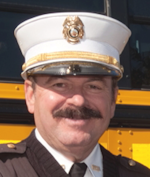Whether you are the public information officer or not, it’s possible that you could be involved in confrontational interviews. With the right attention, confrontational interviews could go worldwide in less than a day and in most cases the public opinion will not be favorable. So how do you prevent such a situation?
The prevalence of video
We are nearly always on camera somewhere. It is said that the average person is recorded on camera somewhere between 60 to 75 times each day. Camera placement can range from doorbells, buildings and utility poles to businesses, residential homes and vehicles. In addition, nearly every person walking on the street has a phone with a camera and many times they are recording. Though the recording may not be of you, you could end up in a video.
The media also uses videos for reporting. Who is part of the media now? Everyone. They may be an amateur, a small neighborhood social media network, a local radio or television station, or the large networks. Anyone who records or takes photos of an incident and provides that to the media becomes a contributing reporter. There is no fine line between who is the media or not. If a person advises you that they are a reporter, whether it’s for a YouTube channel or a local television station, you must treat them equally. Many stations are relying on the public to provide them with video and photos so they do not have to cover it themselves or in the event that they do not have someone to cover the story. How many times have you seen newscasters say, “Send us your pics or video and we just might use it!”?
What about Twitter, Facebook, Instagram and other social media platforms out there? Social media has the word “media” in it. It is news.
React with poise and professionalism
There are two ways you can give an interview: by consent and without your knowledge.
With consent means the media does a formal interview to which most of us are accustomed. They come up to you and say, “Hi, I’m Bill with XYZ News. Can I ask you a few questions for an interview?” If you agree, they can ask any question after that and use it.
The other type of interview is without your knowledge. When you go to an incident, every bystander now has a phone out taking photos or video of the incident. They will keep on recording as long as they can. How many times have you had to tell bystanders to get back for their safety? Take whatever action you must to get them back to a safe area. In my experience, most of the time the traditional media comply with requests.
If you yell at the public or use obscenities, you can bet before you get back to the station it will be out on social media. Rather than showing the full picture of what happened, it will only show you yelling or shouting obscenities.
While giving an interview to the media, a large crowd may be standing behind the media listening to what you say and record it. Just when you finish the interview, someone may yell out, “What took you so long?” or make other comments with hopes you will reply. Sometimes personnel will give an explanation and the next thing you know a shouting match occurs. These bystanders are only going to post what they want and it’s usually the part that makes you look like the bad guy. Rather than engaging, once your interview with the media is over, walk away.
Occasionally, you will be ambushed while out doing inspections, going to the store or other places. Do not use facial expressions or hand gestures as that makes for great video for them. If they have a problem, suggest they call headquarters and file a complaint.
Controversial interviews are like road rage. Know when to back off and don’t get involved. Always be courteous and polite. Do not use profanity. Don’t let your emotions get the best of you; keep it under control. They can’t make an issue of something if nothing is there.

Timothy Szymanski
Timothy R. Szymanski is a Master Public Information Officer who is the fire public education & information officer for Las Vegas Fire & Rescue. He has been in the fire service for 51 years and has worked in every position from firefighter/paramedic to fire chief in his career. Szymanski also is a Master Fire Service Instructor. He was inducted into the Nevada Broadcasters Association Hall of Fame in 2017 and received the association’s Community Service Award. Szymanski also received the National Firemark Award from Liberty Mutual Insurance. He is a PIO instructor for the Nevada Department of Public Safety and was the Fire & Emergency PIO for the 1996 Summer Olympics in Atlanta.






